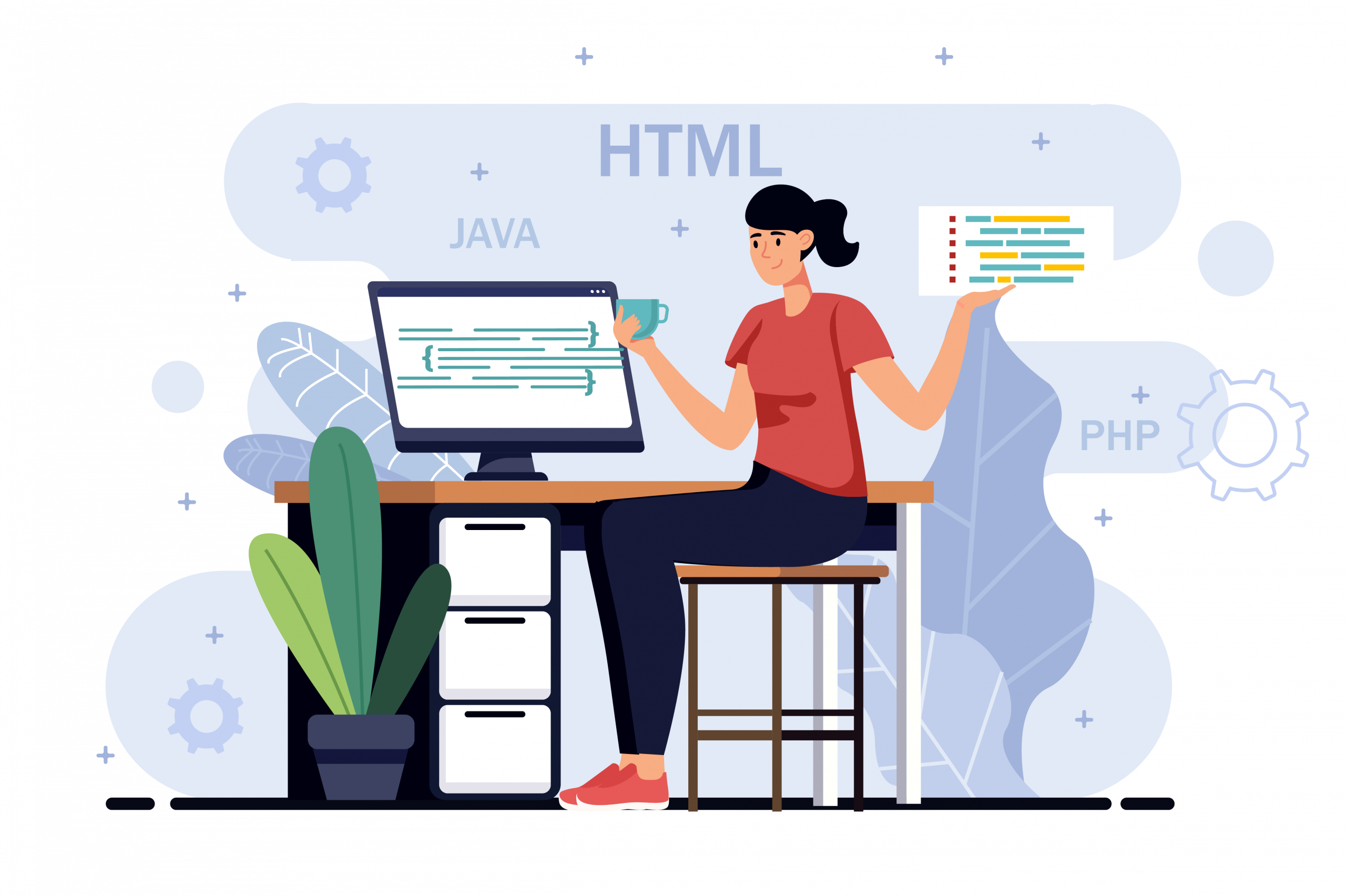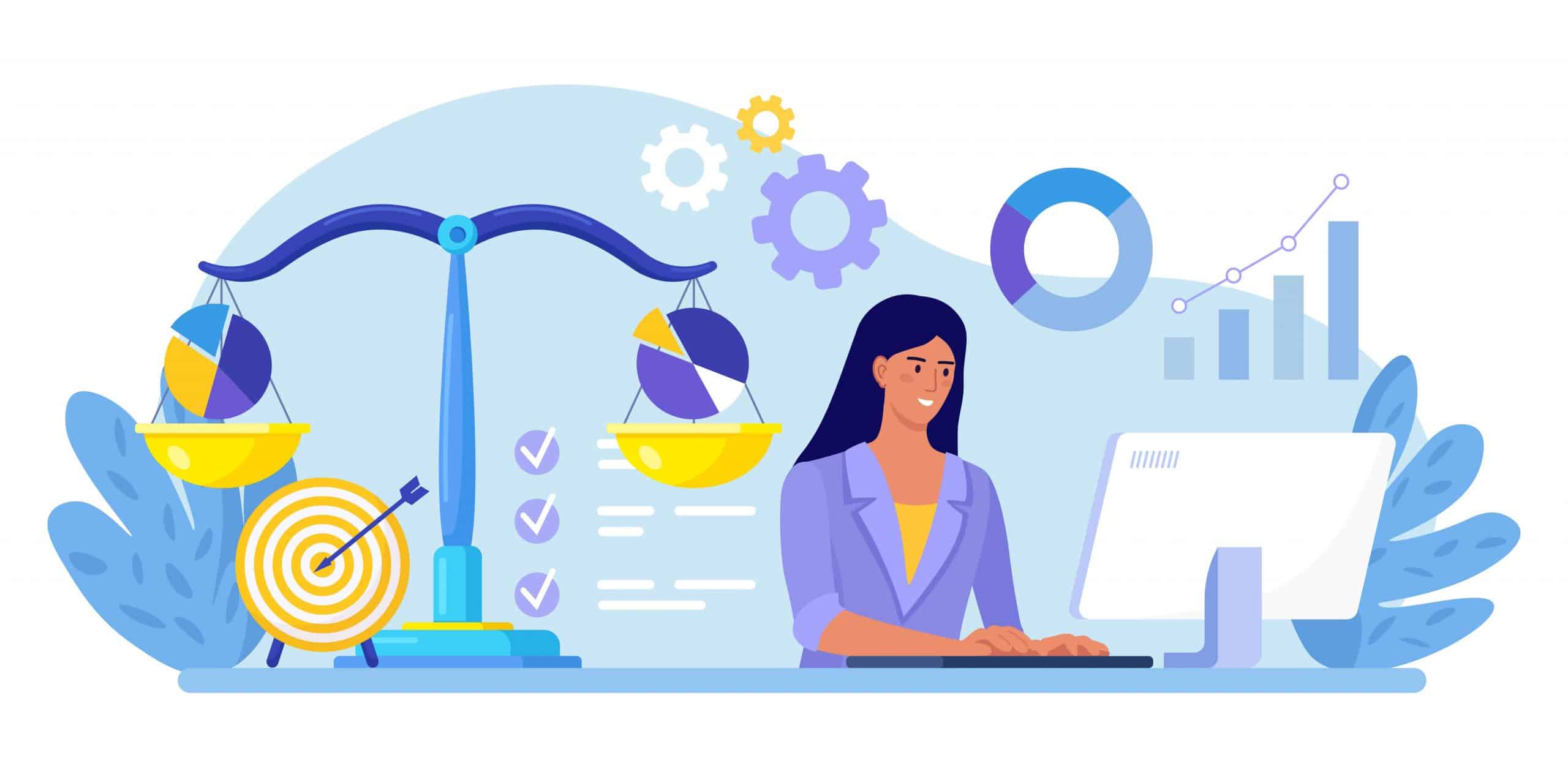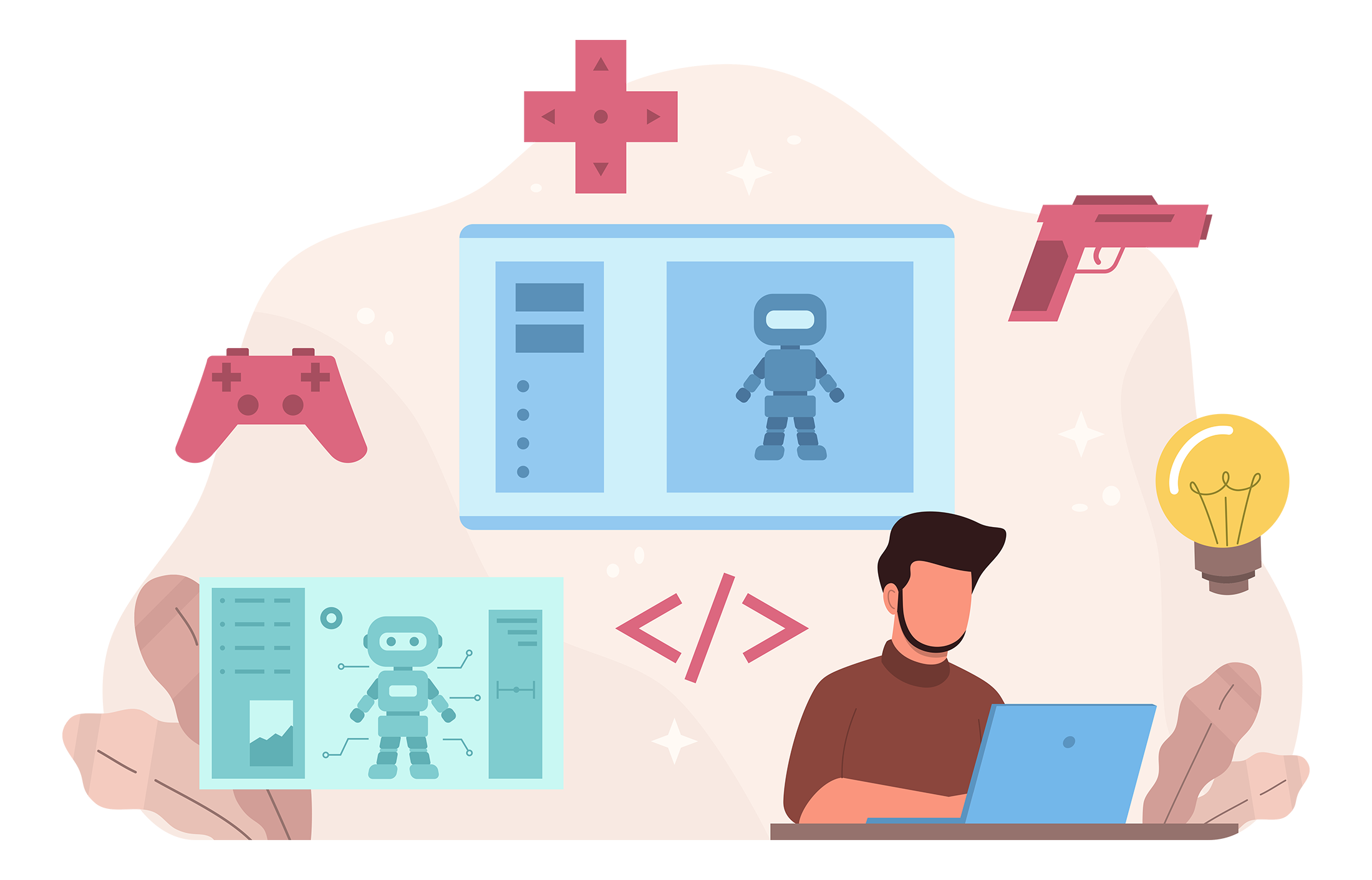How Much Does Software Development Cost?
With the popularization of information technology, the development of digital products has become an integral part of advancing business. An application that allows customers to access desired services quickly increases engagement and the number of loyal customers. Creating a corporate solution speeds up employees’ work and enhances their productivity. All of this contributes to maximizing company revenue. However, initially, one needs to determine how much does it cost to develop software. This is a question asked by everyone who wants to launch their own project.
Specialists from the GetTrusted platform have thoroughly researched this question to provide you with comprehensive information about the software development cost.

Average Cost Of Software Development
The cost of a project is influenced by various factors, such as:
- Type of development (low-code, no-code, cross-platform, native).
- The number of required features and API integrations.
- The skill level of the involved team and the number of participants.
- The tech stack used, and more.
Additionally, average software development costs are also affected by the prices of developer services, which vary depending on their geographical location. For example, in the United States and Western Europe, the average hourly rate of a specialist is around $100. IT workers in Eastern Europe and Asia charge around $50 per hour.
To get an idea of the average development costs, let’s consider different types of software:
- CRM and ERP platforms: $100,000 for basic configurations, while systems with advanced functionality can range from $150,000 to $600,000.
- E-commerce solutions: websites based on popular CMS can cost between $20,000 and $70,000, while software for custom e-commerce systems can start at $50,000.
- SCM systems: ranging from $100,000 to $300,000.
- SaaS applications: ranging from $25,000 to $100,000.
As you can see, the average cost to develop software provides only approximate figures for determining the project budget. Therefore, let’s take a closer look at what is included in the main list of expenses when ordering the development of a digital product.
Key Cost Elements in Software Development Projects
The creation of an application and other solutions occurs in stages. Each stage involves work of a certain volume and complexity, handled by specialized experts. All of this affects the cost.
Requirements Gathering, UX Design, and Project Planning
The first stage constitutes about 10% of the cost of software development and is divided into several sequential substages of work:
- Consulting: Specialists research your company’s short-term and long-term needs, the goals of product creation, and the technology and solutions already available to you.
- UX Design: The team plans how users will interact with the software.
- Planning: Business analysts create a project roadmap, budget estimate, and resource allocation, as well as assess possible risks and limitations.
To save costs at this stage, consult with business analysts and experts in your niche. Also, involve end-users as much as possible when gathering product requirements. This way, you will be focused on creating genuinely demanded and useful software.
System Architecture and User Interface Design
Budget allocation for this stage typically ranges from 5% to 10%. Primary tasks include:
- Software architecture design to determine the number of modules, their algorithms, and data structures.
- Creating a user interface (UI) layout that users will see.
- Selecting the tech stack for accomplishing the set tasks.
Explore the capabilities of your existing software. Enhancing it, adding new features, or modernizing it may be more cost-effective. You can also save on costs by using ready-made UI templates if your solution does not require a unique design.
Software Programming and Development
This stage includes two significant areas of work:
- Back-end development, which accounts for about 40% of the project’s cost and involves writing server-side code and necessary APIs. Developers also conduct modular testing to improve code quality.
- Front-end development, which makes up around 25% of the budget, is necessary for the practical implementation of UI layouts and creating the graphical design of the software.
You can reduce the cost to develop software by creating an automated development and delivery environment, which speeds up the integration process, deployment, and testing of software components. Such an approach can save over 70% of expenses. You can also reduce costs in terms of both money and time by using cloud services and low-code development methods.
Quality Assurance and Testing
During this stage, experts test the software’s functionality and performance. It typically accounts for about 15-20% of the development cost.
Experienced developers recommend conducting testing throughout the entire product creation process. Fixing early-stage defects is significantly cheaper and faster than changing assembled software. Additionally, implementing automated testing tools speeds up work and saves up to 20% of expenses at this stage.
Software Deployment
The cost of this stage of work depends on your needs. Specialists deploy the software for users and provide additional services, including:
- Product configuration and integration into your infrastructure.
- Acceptance testing.
- Training on how to use the software and more.
Software Maintenance and Support
Your digital product in operation may require regular maintenance, updates, technical issue fixes, the addition of new features, and more. Therefore, it is crucial to consider the costs associated with development and ongoing technical support. These costs can reach 15-20% of the overall project cost. To reduce the cost of software development and avoid overpaying for maintenance, choose only the services you need when contracting with a service provider.
A well-thought-out approach to managing each stage of development allows you to avoid downtime, use only the necessary tools and technologies, and ultimately save money and complete the project faster.
Sourcing Models for Software Development Projects
In answering the question of “How much does software cost to develop?” it is important to consider approaches to hiring specialists. You can calculate and allocate your expenses efficiently to obtain a reliable digital product by selecting the optimal option for your business goals.
In-house software development
This model involves searching for and hiring a whole team of developers within your company. The main advantage is that specialists work in your office, making monitoring every stage of development easy. It also promotes excellent communication between you and the team, speeding up the resolution of any emerging issues.
Disadvantages include the lengthy process of hiring qualified specialists and the need to equip workspaces. Therefore, when building your own team, the cost of software development can significantly increase due to expenses such as salaries, taxes, equipment, and the necessary tech stack.
Outsourcing of dedicated teams
This model involves hiring a team from an outsourcing company to work alongside your internal team. The characteristic feature of this option is that you can bring in specialists with skills you may be lacking. For example, suppose you plan to release two applications for different platforms but only have Android developers. In that case, a dedicated team model will allow you to add external iOS developers to the project. This way, you save time and budget on posting job vacancies, hiring, and setting up workspaces for missing programmers.
Outsourced software development
You can hire an external team and delegate all tasks related to the project’s development. The outsourcing company takes care of organizing the process and the material-technical base. The main advantage for you is the ability to save on independent hiring and provide employees with everything they need. Additionally, you can search for an experienced team from countries with lower hourly rates, achieving additional cost savings.
Among the drawbacks is the time zone difference. It can hinder communication between you and the developers. Nevertheless, there is a wide range of outsourcing agencies available in the market, allowing you to choose the most suitable and located closer to you.
Strategies for Cutting Software Development Expenses
Creating new digital products is a multi-level process that consists of various tasks. Each stage of work requires a certain number of hours and financial resources. Therefore, the software development price may remain high even when choosing the most cost-effective option for hiring IT specialists. This can be addressed by implementing some effective cost-reduction strategies.
Embracing Open-Source Software Solutions
Open-source software solutions are available to every user. They can be modified or improved without restrictions to meet your needs. This ensures high product functionality, security, quality, and reliability.
Components for open-source development include operating systems, web development tools, databases, machine learning environments, and more. Typically, they come with a GPL3 license. Therefore, using open-source solutions can be more cost-effective if you want to reduce the cost of developing software.
Reducing Dependence on Third-Party Integrations
Developing software with numerous integrations with third-party platforms, websites, payment gateways, and more increases its cost. However, it also increases its value to users. To create a valuable application while saving on the budget, you can use ready-made solutions from third-party developers.
For example, if your product includes online payment, you can integrate it with popular platforms like Stripe or PayPal instead of spending time and money developing your payment solution.
Another effective method to save on third-party integrations is to choose only the ones in demand. Conduct audience research to determine the features that make your product most valuable to users. Based on these results, you can compile a list of the most necessary integrations.
Adoption of Agile Project Management Practices
In the software development industry, numerous methodologies and practices aim to reduce the average cost for software development. For example, Agile methodology and tools like Scrum optimize the development management process by breaking it down into sprints with specific deadlines. This provides you with reports for each stage of work and allows you to make timely adjustments. As a result, you can significantly save your finances, as defects identified during testing are 15 times more expensive to fix than those discovered at earlier stages.
DevOps and DevSecOps practices can reduce the cost of software development. They aim to facilitate collaborative work among development, operations, and testing teams, along with implementing automated tools. Thanks to these approaches, you maintain the quality of the product, accelerate its time to market, and save money on hourly labor costs.
Streamlining Design Complexity
Design solutions also influence software development pricing. The more complex and multifunctional your user interface is, the more expensive the services of a UI designer will be. However, you can still reduce expenses reasonably. If your project’s critical competitive advantage is not a unique design, you can use template options and standard navigation design approaches.
Additionally, consider optimizing UI design and user experience (UX) by removing unnecessary features and capabilities. This approach not only saves you money but also accelerates software development.
Sample Software Development Project Costs
To get a complete pricing picture, let’s consider software development cost breakdown by project complexity levels and the work process components.
| Components of Software Development | Basic Complexity | Medium Complexity | High Complexity |
| Business Analysis | $2,500-5,000 | $5,000-8,000 | $15,000 and above |
| UI/UX Design | $5,000-7,000 | $7,000-15,000 | $30,000 and above |
| Project Management | $7,000-10,000 | $10,000-15,000 | $25,000 and above |
| Programming | $7,000-20,000 | $25,000-50,000 | $75,000 and above |
| Testing and Quality Assurance | $5,000-7,000 | $10,000-15,000 | $25,000 and above |
| Post-release Support and Other Expenses | From $1,000 | $25,000 and above | Around $4,500 |
| Average Cost | $30,000+ | $65,000+ | $175,000+ |
Software development prices will also vary depending on the tasks at hand. For example:
- Modification and optimization of your existing product:
- Small software: $3,000 to $10,000
- Medium: $20,000-50,000
- Large: $80,000-150,000
- Enterprise: From $100,000
- Web development from scratch:
- Small project: $10,000-30,000
- Medium: $20,000-60,000
- Large: $60,000-150,000
- Enterprise: From $80,000
- New software development:
- Simple: $25,000-60,000
- Medium: $50,000-100,000
- Complex: $100,000-250,000
- Enterprise: From $125,000 and above
- Software integration into an existing system:
- Small project: $15,000-40,000
- Medium: $50,000-80,000
- Large-scale: $70,000-100,000
- Enterprise: $80,000 and above
Conclusion
By studying the materials provided by GetTrusted experts, you have received an answer to the question of how much does software development cost. To create an approximate estimate, you should consider the type and complexity of the project, functional and UI/UX design requirements, the team hiring model, the number, qualifications, and location of developers.
To reduce costs, you can use flexible development methodologies and practices, automation tools, ready-made third-party solutions for integration, design templates, and more. When hiring a team, evaluate your needs and choose the most cost-effective option: in-house development, involving a dedicated team, or delegating all tasks to external specialists.
At GetTrusted, our primary goal is to help you find an experienced and licensed outsourcing agency that aligns with your requirements and financial capabilities. Reach out to our consultants, and we will select the best IT team for your project.









